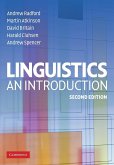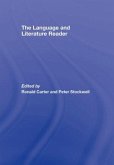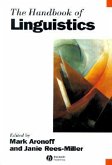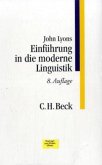Contemporary Linguistics: An Introduction is a comprehensive, fully up-to-date introduction to linguistics. All the core topics of linguistics are covered, including phonetics, phonology, morphology, syntax, semantics, the genetic and typological classification of the languages of the world, and historical linguistics. Interdisciplinary areas discussed include language and the brain, psycholinguistics - the study of language processing, first and second language acquisition, language in social contexts and the fast-growing area of computational linguistics. Product Description
Contemporary Linguistics can be used from first year through to final year as a main text for students taking degree courses in linguistics, English language and cognitive science and by MA students on TEFL courses. It is also highly suitable for students taking language options in media and cultural studies, modern language, psychology and philosophy, as well as for speech therapy courses.
Contemporary Linguistics : An introduction is a comprehensive, fully up-to-date introduction to linguistics. The book covers not only how language is structured, but also how it functions both socially and culturally, and how it is acquired and processed by speakers. It will prepare students to go on to more advanced work and, at the same time, will serve as a basic reference that students can continue to consult throughout their studies.
The text explores all the core areas of linguistics as well as numerous interdisciplinary and related areas.
Core topics covered include phonetics, phonology, morphology, syntax, semantics, the genetic and typological classification of the languages of the world, and historical linguistics.
Interdisciplinary areas discussed include language and the brain, psycholinguistics - the study of language processing, first and second language acquisition, language in social contexts and the fast-growing area of computational linguistics.
Related areas explored include writing systems and animal communication.
Features + Benefits
A modular arrangement of the material facilitates the use of the book in courses at varying levels, and with differing emphasis.
Comprehensive and up-to-date introductory text.
Includes flagged material for more advanced study, end-of-chapter exercises and a detailed glossary.
Backcover
Contemporary Linguistics has long provided a comprehensive introduction to the discipline, balancing engaging aspects of language study with sound coverage of the core areas of linguistics. Now in its second UK edition, it has been fully revised and updated to reflect the latest trends in scholarship, and includes an entirely new chapter expounding cognitive grammar.
An initiation into the intricacies of scientific linguistic analysis, Contemporary Linguistics covers not only how language is structured, but also how it functions both socially and culturally, and how it is acquired and processed by speakers.
Interdisciplinary areas such as psycholinguistics, language acquisition and the growing field of computational linguistics are explored as well as the fundamentals of phonetics and phonology, syntax and semantics. Up-to-date scholarship, a direct approach and a lucid writing style makes it appealing to instructors and students alike, and a resource that many students continue to use beyond the classroom.
Features include:
Language Matters boxes providing more general interest reading
Extra student resources available in a Companion Website ( www.pearsoned.co.uk/ogrady ) with additional coverage of topics treated in the text and organised to correspond to the chapters of the book
Originally co-edited by William O’Grady and John Archibald, with contributions from other leading scholars, and published in Canada, this major textbook has been fully adapted and updated by Francis Katamba for use in Britain and the rest of the world outside North America.
Preface to the UK second edition
Acknowledgements
List of technical abbreviations
Chapter 1: Language: A Preview
Chapter 2: Phonetics: The Sounds of Language
Chapter 3: Phonology: The Function and Patterning of Sounds
Chapter 4: Morphology: The Analysis of Word Structure
Chapter 5: Syntax: The Analysis of Sentence Structure
Chapter 6: Semantics: The Analysis of Meaning
Chapter 7: Cognitive Grammar
Chapter 8: Historical Linguistics: The Study of Language Change
Chapter 9: The Classification of Languages
Chapter 10: First Language Acquisition
Chapter 11: Second Language Acquisition
Chapter 12: Psycholinguistics: The Study of Language Processing
Chapter 13: Brain and Language
Chapter 14: Language in Social Contexts
Chapter 15: Writing and Language
Chapter 16: Animal Communication
Chapter 17: Computational Linguistics
Glossary
Sources
Language Index
Index
Contemporary Linguistics: An Introduction is a comprehensive, fully up-to-date introduction to linguistics. All the core topics of linguistics are covered, including phonetics, phonology, morphology, syntax, semantics, the genetic and typological classification of the languages of the world, and historical linguistics. Interdisciplinary areas discussed include language and the brain, psycholinguistics - the study of language processing, first and second language acquisition, language in social contexts and the fast-growing area of computational linguistics.
Contemporary Linguistics can be used from first year through to final year as a main text for students taking degree courses in linguistics, English language and cognitive science and by MA students on TEFL courses. It is also highly suitable for students taking language options in media and cultural studies, modern language, psychology and philosophy, as well as for speech therapy courses.
Contemporary Linguistics : An introduction is a comprehensive, fully up-to-date introduction to linguistics. The book covers not only how language is structured, but also how it functions both socially and culturally, and how it is acquired and processed by speakers. It will prepare students to go on to more advanced work and, at the same time, will serve as a basic reference that students can continue to consult throughout their studies.
The text explores all the core areas of linguistics as well as numerous interdisciplinary and related areas.
Core topics covered include phonetics, phonology, morphology, syntax, semantics, the genetic and typological classification of the languages of the world, and historical linguistics.
Interdisciplinary areas discussed include language and the brain, psycholinguistics - the study of language processing, first and second language acquisition, language in social contexts and the fast-growing area of computational linguistics.
Related areas explored include writing systems and animal communication.
Features + Benefits
A modular arrangement of the material facilitates the use of the book in courses at varying levels, and with differing emphasis.
Comprehensive and up-to-date introductory text.
Includes flagged material for more advanced study, end-of-chapter exercises and a detailed glossary.
Backcover
Contemporary Linguistics has long provided a comprehensive introduction to the discipline, balancing engaging aspects of language study with sound coverage of the core areas of linguistics. Now in its second UK edition, it has been fully revised and updated to reflect the latest trends in scholarship, and includes an entirely new chapter expounding cognitive grammar.
An initiation into the intricacies of scientific linguistic analysis, Contemporary Linguistics covers not only how language is structured, but also how it functions both socially and culturally, and how it is acquired and processed by speakers.
Interdisciplinary areas such as psycholinguistics, language acquisition and the growing field of computational linguistics are explored as well as the fundamentals of phonetics and phonology, syntax and semantics. Up-to-date scholarship, a direct approach and a lucid writing style makes it appealing to instructors and students alike, and a resource that many students continue to use beyond the classroom.
Features include:
Language Matters boxes providing more general interest reading
Extra student resources available in a Companion Website ( www.pearsoned.co.uk/ogrady ) with additional coverage of topics treated in the text and organised to correspond to the chapters of the book
Originally co-edited by William O’Grady and John Archibald, with contributions from other leading scholars, and published in Canada, this major textbook has been fully adapted and updated by Francis Katamba for use in Britain and the rest of the world outside North America.
Preface to the UK second edition
Acknowledgements
List of technical abbreviations
Chapter 1: Language: A Preview
Chapter 2: Phonetics: The Sounds of Language
Chapter 3: Phonology: The Function and Patterning of Sounds
Chapter 4: Morphology: The Analysis of Word Structure
Chapter 5: Syntax: The Analysis of Sentence Structure
Chapter 6: Semantics: The Analysis of Meaning
Chapter 7: Cognitive Grammar
Chapter 8: Historical Linguistics: The Study of Language Change
Chapter 9: The Classification of Languages
Chapter 10: First Language Acquisition
Chapter 11: Second Language Acquisition
Chapter 12: Psycholinguistics: The Study of Language Processing
Chapter 13: Brain and Language
Chapter 14: Language in Social Contexts
Chapter 15: Writing and Language
Chapter 16: Animal Communication
Chapter 17: Computational Linguistics
Glossary
Sources
Language Index
Index
Contemporary Linguistics: An Introduction is a comprehensive, fully up-to-date introduction to linguistics. All the core topics of linguistics are covered, including phonetics, phonology, morphology, syntax, semantics, the genetic and typological classification of the languages of the world, and historical linguistics. Interdisciplinary areas discussed include language and the brain, psycholinguistics - the study of language processing, first and second language acquisition, language in social contexts and the fast-growing area of computational linguistics.








